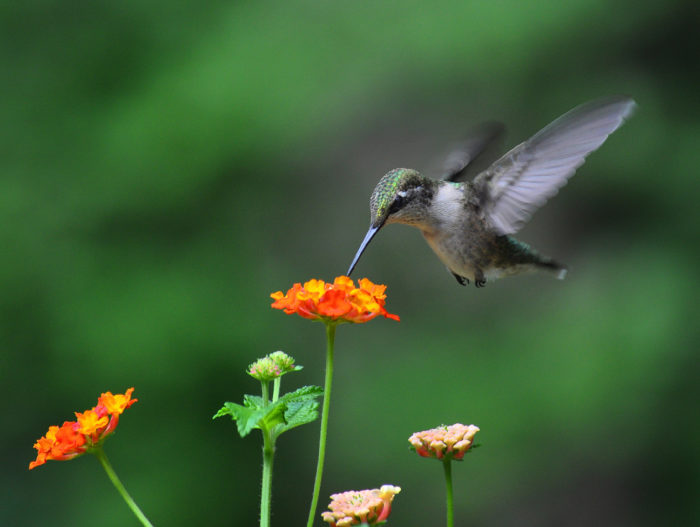
Did you know hummingbirds can fly 40 miles per hour? Tiny, beautiful, and the only bird that can fly backward, the hummingbird is the smallest migrating bird. During its eight-year life span, this energetic little creature visits up to 2,000 flowers a day, sipping nectar from each bloom two to three times per day. While feeding, it pollinates over 300 plant species and is also a voracious insect eater, particularly during nesting season when the protein requirements of the growing nestlings is highest. For these reasons, hummingbirds are valuable members of a healthy ecosystem. Two California natives, Anna’s hummingbird and Allen’s hummingbird, are year-round residents, while up to 12 other hummingbird species spend the spring and summer months in Northern California before returning to their winter homes in October. Want to attract more of these delightfully entertaining, pest-eradicating pollinators to your garden? Read on for hints and tips to create a hummingbird haven!

To thrive, hummingbirds must consume twice their body weight in nectar and insects each day. Growing a steady supply of hummingbird-attracting blooms is an important consideration of course, but maintaining an insect-friendly, pesticide-free garden is equally important. As well as abundant food sources, hummingbirds need trees or shrubs to provide nesting sites, adequate perches to allow rest between feedings, and clean water for bathing and drinking. And they need nesting material. Hummingbirds use spider web silk to weave moss and lichen into their nests and to bind their nests to branches. This holds the nests together, but it also allows them to expand as the chicks grow. So be sure to leave ample spider webs for these little nest builders!
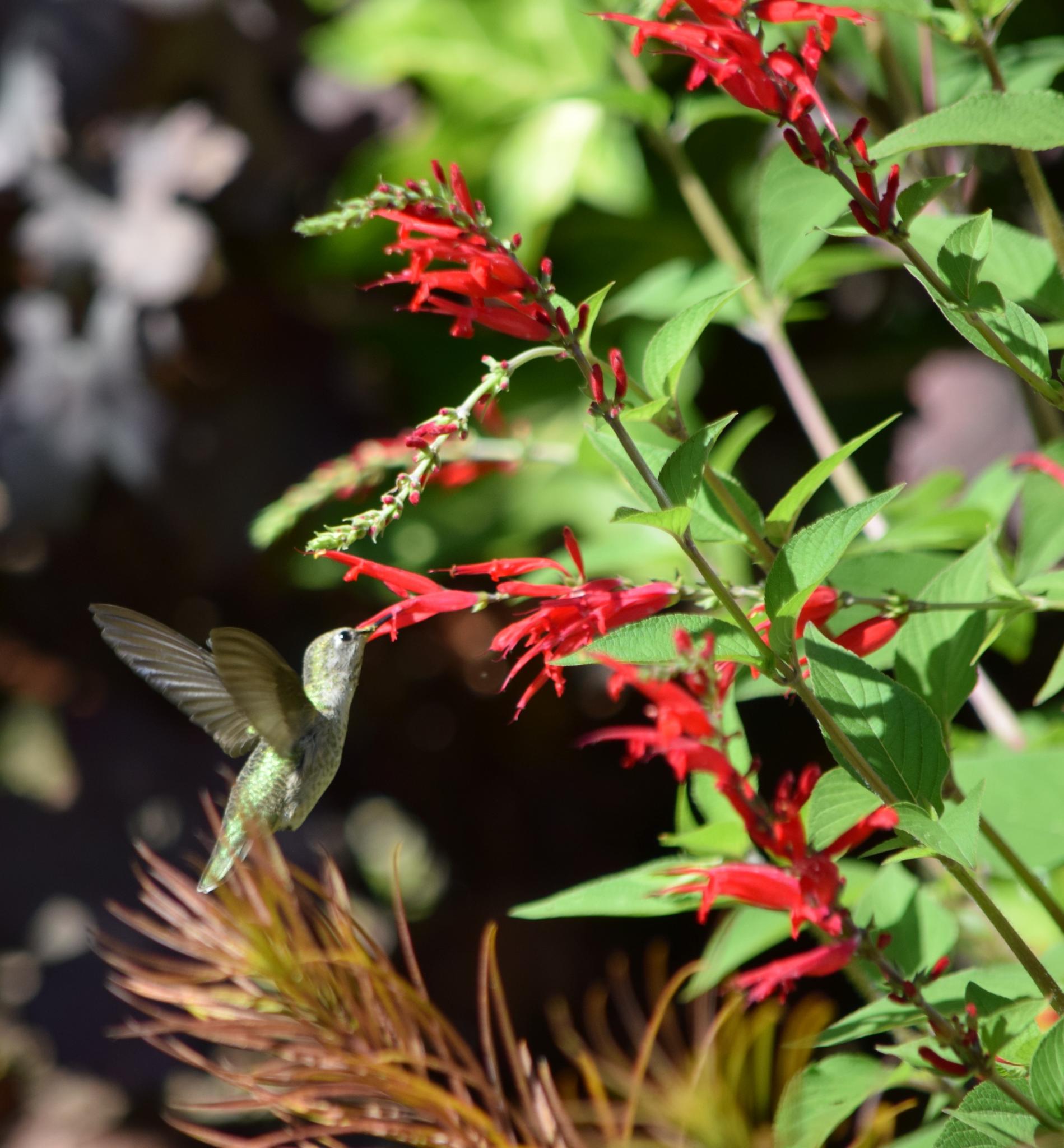
Thinking about including a hummingbird feeder? According to studies done at UC Davis, the jury is still out on whether backyard hummingbird feeders are beneficial or harmful to hummingbirds. However, it’s been determined that planting both native and nonnative flowering plants known to attract hummingbirds provides a considerable benefit to the birds.
If starting from scratch, place your hummingbird garden where both sun and shade feature throughout the day and where you can get good views of your winged guests from a window, deck, patio, or hammock. If possible, go big. Smaller spaces can be designed to efficiently maximize nectar production, but a larger garden accommodates a greater variety of plants in greater numbers and bloom times—all of which brings more hummingbirds.


Spring- and summer-flowering hummingbird-friendly annuals and perennials are plentiful, such as salvia (Salvia spp. and cvs., Zones 5–11), hummingbird mints (Agastache spp. and cvs., Zones 5–11), penstemons (Penstemon spp. and cvs., Zones 4–10), and zinnias (Zinnia elegans and cvs., annual). However, it’s also important to include winter bloomers for your year-round residents. Flowering tobacco (Nicotiana spp. and cvs., Zones 5–10), grevilleas (Grevillea spp. and cvs., Zones 8–10), and ‘Carmine Bells’ Australian fuchsia (Correa ‘Carmine Bells’, Zones 8–10) bloom in my NorCal garden all winter long, keeping the permanent resident hummingbirds well nourished.
Plant for overlapping bloom periods year-round to ensure a sustained nectar supply and constant visitors. Growing your plants in swathes or clusters as multiples makes them more visible to hummingbirds than a single plant would be, increasing their motivation to stop and investigate. Hummingbirds sip from flowers of all colors but clearly prefer red, so be sure to include red in your garden’s color palette. Here are a few more of my own favorite hummingbird-feeding plants.
‘Tiger Eye’ flowering maple
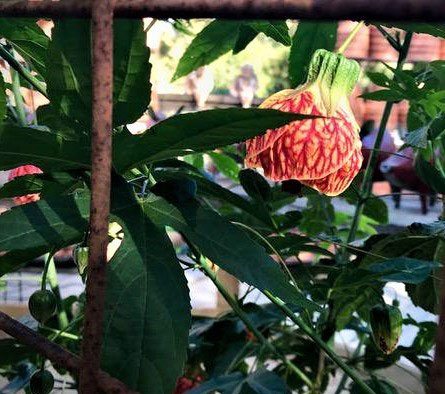
Name: Abutilon ‘Tiger Eye’
USDA Hardiness Zones: 9–11
Mature size: 5 to 8 feet tall by 3 to 5 feet wide
Blooming period: Spring through fall; year-round in frost-free areas
This vigorous, showy shrub is perfect for the back of your shaded border, with its glossy-green leaves and bell-shaped, red-veined, apricot-colored blooms dangling decoratively from arching branches. Plant in afternoon shade in rich, well-amended soil, and water regularly for best results. This plant looks just as lovely in a pot as it does in the garden, and it is an excellent choice for container gardening. Prune back hard once a year.
‘Hot Lips’ salvia
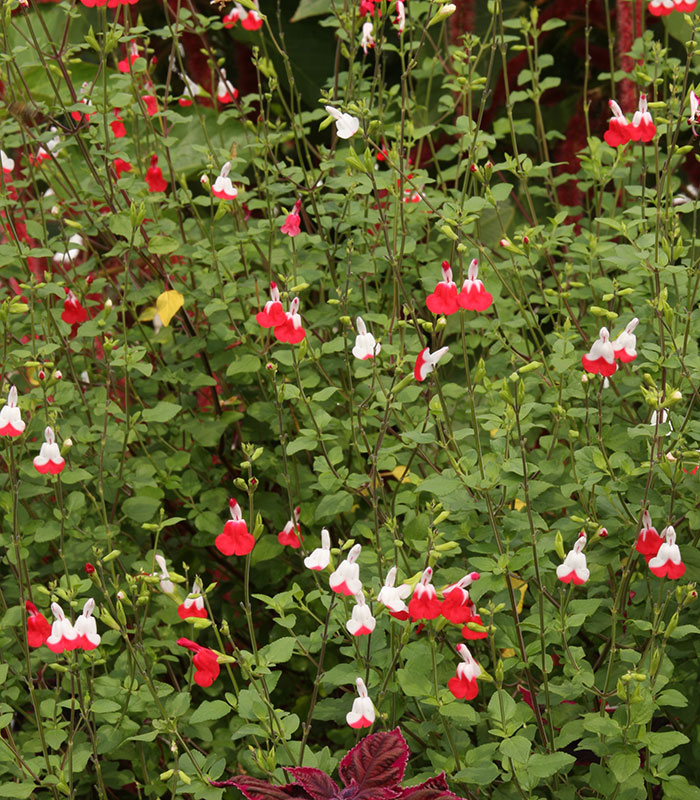
Name: Salvia microphylla ‘Hot Lips’
Zones: 8–10
Mature size: 3 feet tall by 3 feet wide
Blooming period: Late spring through fall
Petite, delicately fragrant foliage on ‘Hot Lips’ salvia makes the perfect backdrop for a multitude of two-toned red and white flowers, which attract hummingbirds continuously from late spring through fall. This salvia is easy to grow in full sun and well-drained soil, and it is a colorful, carefree, and drought-tolerant choice for your hummingbird garden. Cut back by as much as half in late January to encourage vigorous new growth and profuse blooms.
‘Delta Dawn’ heuchera
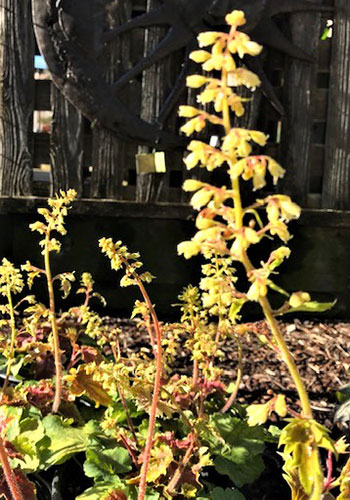
Name: Heuchera sanguineum ‘Delta Dawn’
Zones: 4–9
Mature size: 8 to 12 inches tall by 14 inches wide
Blooming period: Early summer; reblooms with regular deadheading
With its varied foliage coloration (golden lime green with a crimson center and veining) and vigorous growth habit, this showy, low-growing perennial is outstanding in the shady border or container all year long. Hummingbirds are attracted to the airy sprays of tiny, bell-shaped, lemon-colored blooms that appear in early summer. Plant in filtered sun or afternoon shade, in rich, well-amended soil, and irrigate regularly during dry periods.
Thyme-leaved fuchsia
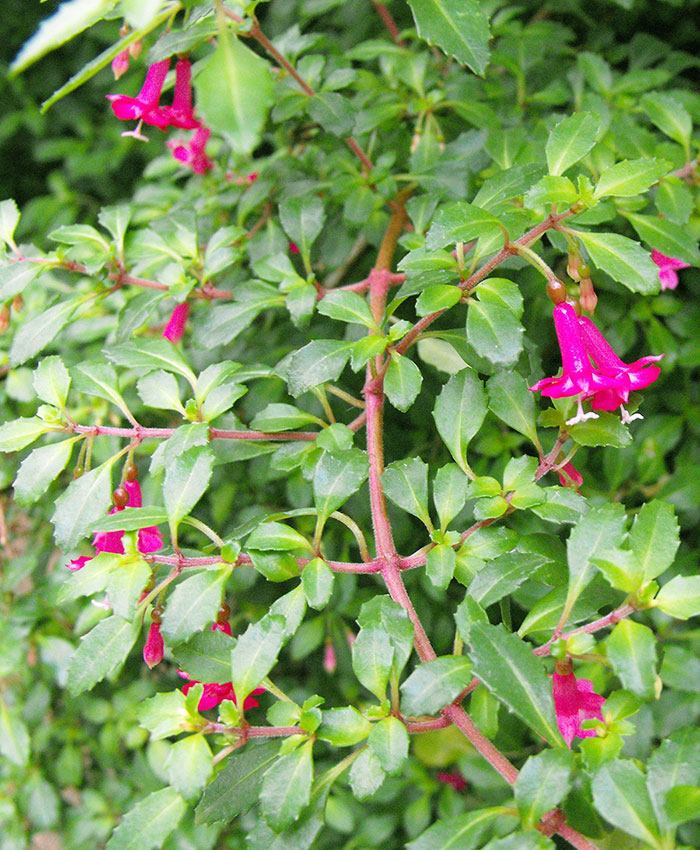
Name: Fuchsia thymifolia
Zones: 7–9
Mature size: 3 to 4 feet tall and wide
Blooming period: Spring through fall
Small, slightly serrated leaves clothe the arching branches of this dainty-looking, mite-resistant fuchsia. Evergreen in frost-free areas and deciduous elsewhere, this attractive shrub produces abundant, tiny, dark pink fuchsia flowers that hummingbirds adore. Plant thyme-leaved fuchsia in afternoon shade, in rich, well-amended soil, and water lightly but regularly. Cut back hard once a year to ensure plentiful blooms the following season.
—Fionuala Campion is the owner and manager of Cottage Gardens of Petaluma in Petaluma, California.


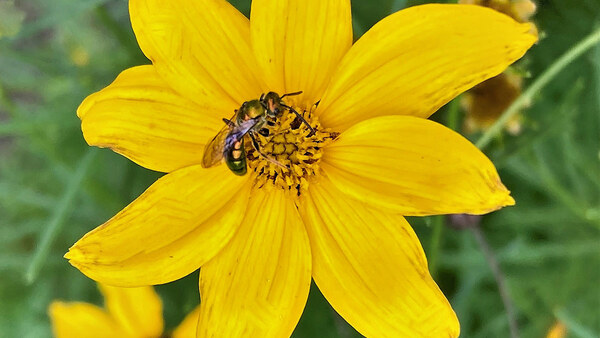















Comments
Log in or create an account to post a comment.
Sign up Log in